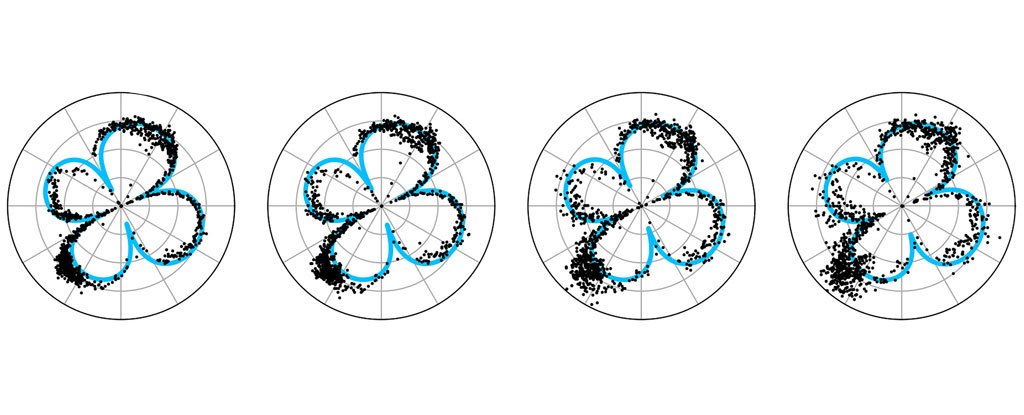
The findings of the four-leaf clover pattern of earthquake shockwaves could be important in making our buildings and cities more resistant to large earthquakes in the future.
This pattern has been analyzed before, but never as much as this. The team behind the new study is hoping that it will remove some of the mystery surrounding how earthquake shockwaves spread out across different frequencies.
Many buildings and structures are particularly vulnerable to the low frequencies of the cloverleaf shockwaves.
The four-leaf clover pattern can be seen at lower frequencies. Trugman et al., Geophysical Research Letters, 2021.
A simplified and widely used four-lobed model of earthquake ground motions does a good job of describing the observed seismic wavefield according to the researchers.
The four-lobed radiation pattern becomes less clear due to the complexity of earthquake source processes and fault zone structure.
The LArge-n Seismic Survey in Oklahoma is the densest on the planet, with 1,829 sensors within an area of just 25 miles.
LASSO was used to measure P-wave data from 24 small earthquakes over a period of 28 days in 2016 and it's this data that the new study digs into. Patterns could be spotted before they smoothed out and evened off over greater distances, because the sensors were so close to the epicenter.
The four-leaf clover pattern was only found at the lower frequencies. It might be because lower frequencies of waves can ignore the broken rock found at earthquake faults, rather than being reflected and scattered in different directions.
When there is an earthquake, pieces of broken rock inside the fault zone start to move like pinballs.
The earthquakes recorded by the LASSO array were relatively small, but the same patterns should be repeated across stronger earthquakes. The next step is to put that to the test.
New data can make earthquake assessments and modeling more accurate. It shows that while people on the ground might experience a consistent level of shockwaves, the buildings around them might be under a greater or lesser level of stress.
The underlying physics of earthquake faults should be the same as they vary in age, geological composition, and other factors. The scientists are hoping to put together a catalog of earthquake zones, showing the fault areas with the most potential for earthquakes.
The study's first author, earthquake seismologist Daniel Trugman from the University of Texas at Austin, says that the study's results are important because they show a variation in ground motion close to the source.
The research has been published.
